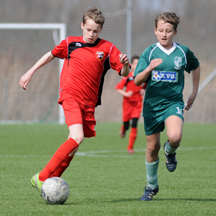A
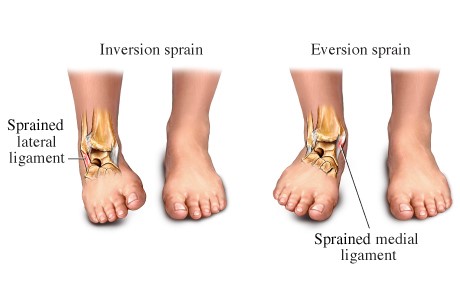
An ankle sprain is a common Sports injury which happens when the ankle stretches more than normal. This over stretch weakens the ligaments that hold the bones together. Ligaments are the fibrous bands that hold the ankle joint together.
The ankle consists of 3 joints. The joints are between the lower end of two long bones in your leg. They are called the Tibia and Fibula. They attach to the two bones in your feet called the Talus and calcanium.
Together with the muscles and ligaments, the bony ends on the sides of your long bones called malleoli provide stability to the joint. The ankle is least stable when the foot is down. Most stability is provided by the ligaments. As a result, the majority of ankle sprain injuries happen when your foot is in this position.
There are two types of sprains. An inversion injury happens when the foot rolls inwards. This causes injury to the ligaments on the outside of the ankle called lateral ligaments. Most of the time a ligament called anterior talofibular ligament (ATFL) is injured. The ATFL is the weakest of the lateral ligaments.
An eversion injury happens when the foot is rolled outwards. This causes injury to the ligaments on the inside called the Deltoid ligament. As the medial ligament requires a greater force to be injured, these sprains always take longer to rehabilitate.
Risk Factors
Based on the severity of symptoms, an ankle sprain is classified into 3 grades.
If you have a previous history of ankle sprain, you will have more chances of re injury. This happens because the strength and integrity of the muscles and ligaments around the ankle joint will be affected.
The other risk factors are poor balance, sudden change in direction , age, poor condition of playing surface and inadequate warm up. Lastly, inappropriate footwear and a lack of external ankle support in case of recent injuries can cause increased risk.
Grade 1 – Mild swelling and tenderness with little impact on function.
Grade 2- Moderate swelling, pain and impact on function. You will have reduced range of movement and instability of the joint.
Grade 3 -Large swelling, loss of function and marked instability at the joint.
Symptoms
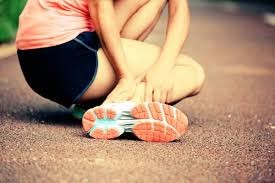
Pain, bruising, swelling and difficulty to weight bear are the initial symptoms. As a result, pain is usually worst in the first two or three days. The location of pain indicates which ligament is injured.
In severe injuries where there is complete rupture of a ligament, you will feel instability in the ankle joint. If you have suffered from a severe ankle sprain, there is a chance of associated fractures. As a result, you may require an x ray to determine the possibility of broken bones.
Physiotherapy Treatment
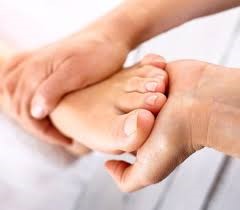
Your physiotherapist will be able to assess the possibility of some of the common fractures using a special palpation method. The other aims of ankle examination are to check for any instability. Lastly, we look for loss of range of motion, reduced strength, reduced proprioception and associated injuries.
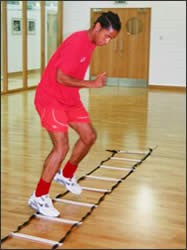
Initial treatment is focussed on Protection and optimal loading. That means the right amount of activity to stimulate healing. In addition, Ice, compression and elevation(POLICE) are also recommended in the first 48 hours after injury.
Protection of the joint?
Taping, bracing, or crutches if needed. In addition, we also recommend the use of an aircast boot. As a result, this will restrict movement and allow for more rapid healing. PhysioNow stocks aircast boots in all sizes at the Applewood Office.
Optimal Loading ?
Optimal Loading
Avoid activities which cause pain. Minimize the amount of walking you do. Use of crutches, air cast boots, braces or taping may be advised by your Physiotherapist on assessment.
Ice
It is recommended that you Do Apply ice cubes or ice packs in a damp towel up to 15 minutes every 3 hours for the first 48 hours when you are awake. Do not apply ice directly to your skin. Please, Do not apply ice if you have cold intolerance due to any medical condition.
We do not recommend the use heat in the early phase of injury.
Compression
Compression involves using a bandage from toes to just above the ankle joint. Make sure that the compression does not cause more pain or restrict the circulation. If you are in doubt, your Physiotherapist can teach you how to apply the bandage in the early phase of injury.
Compression
Elevation
Elevate your injured leg above your heart level using pillows while resting.
Ultrasound therapy, Laser acupuncture, taping, bracing, and exercises are used to reduce pain and inflammation. In addition, manual therapy and exercises are used for improving the range of motion, strength and joint position sense (proprioception).
Once all the movements are pain free and there is adequate muscle strength and proprioception, functional exercises can be started. These exercises will be directed to your normal Sports Activities and Activities of Daily Living.
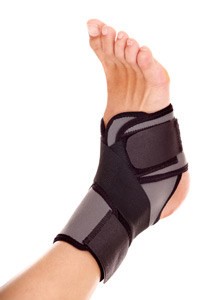
Healing Time for Ankle Sprain
The healing of ligaments takes about 6 weeks, but also depends on the severity of the injury and other medical problems which you might have. Consequently, everyone recovers from the injury at different rates. As the ligament is healing it is important to do specific exercises advised by your Physiotherapist to improve flexibility and strength.
It is very important to complete the whole rehabilitation process. If you do this, it will reduce the chances of re injury. In conclusion, we want to get you back to your pre-accident Sports Activities as soon as possible!
How to reduce the risk of Ankle Sprain
To reduce the risk of ankle sprain, make sure that you:
Warm up before exercise or activity.
Cool down with slow stretches after the exercise or activity
Wear supportive shoes
Take extra care when you walk or exercise on slippery or uneven surfaces.
Adequate stretching and strengthening of your muscles if you have a history of previous injury.
Give enough time to recover between training sessions.
Use the right sports gear.
Taping or use of brace in competitive games if you had a recent ankle sprain.
How to book an appointment with a Physiotherapist at PhysioNow?
Locations for PhysioNow clinics
We have four Physiotherapy clinics of which three are located in Mississauga and one is in Etobicoke. https://www.physionow.ca/locations/
You can call 289-724-0448 to book for a same day appointment with one of our highly trained Physiotherapists. Most of the time we can arrange your initial visit on the same day in a location which is nearest to you. Your initial appointment will be a one to one 40 minutes session. This appointment will be with a Physiotherapist and includes initial assessment, education and treatment.
You will have 40 minutes of follow up, which will be usually 2 to 3 sessions a week depending on the factors identified on initial assessment, treatment plan and your goals.
Call today to get started on your Physiotherapy for Ankle Sprain!
